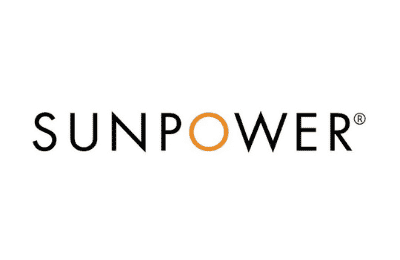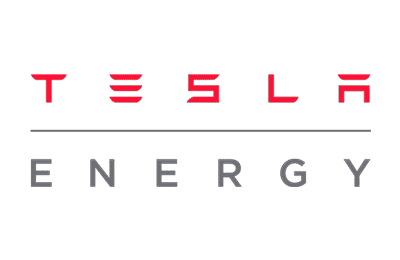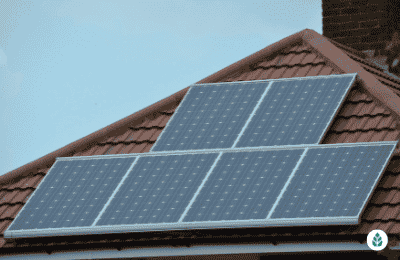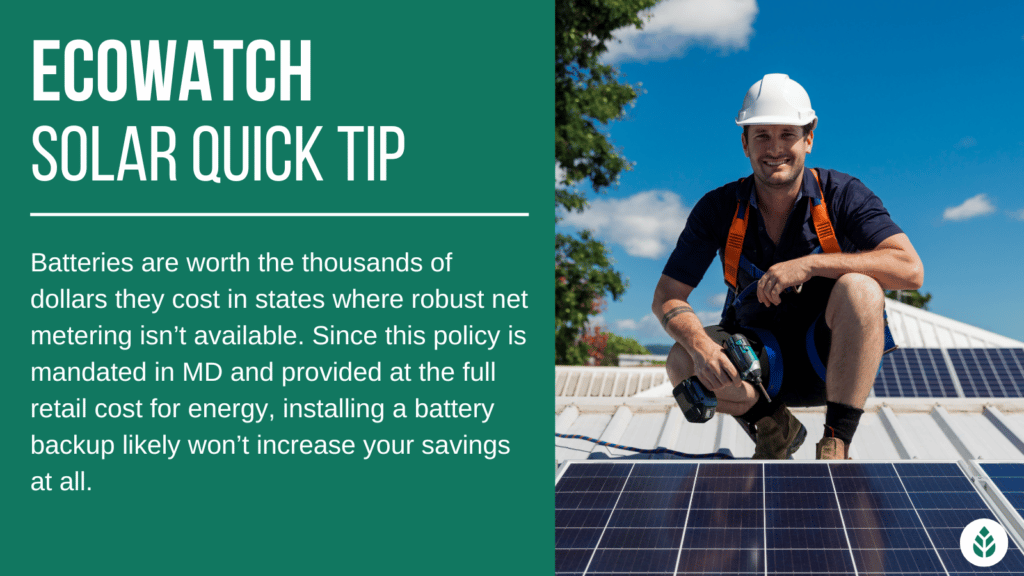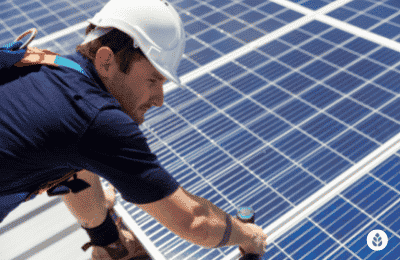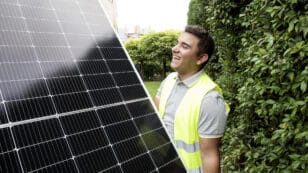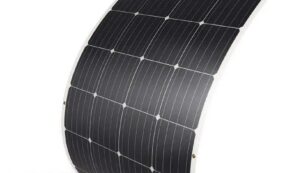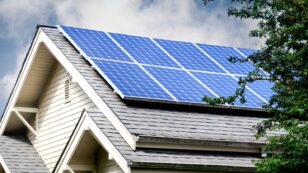 Reviews
Reviews
Top 7 Best Solar Companies in Maryland (2024 Reviews)
In this guide on Maryland’s best solar installation companies, you’ll learn:
- What are the best solar panel installation companies in Maryland?
- How can you save money when choosing a solar provider in Maryland?
- What factors are most important when picking a solar provider in Maryland?
Each product and or company featured here has been independently selected by the writer. You can learn more about our review methodology here. If you make a purchase using the links included, we may earn commission.
Going solar in Maryland is usually highly beneficial, with the average solar system paying for itself in 11 years and then saving an additional $34,212 on electricity costs. In fact, solar systems are more beneficial in Maryland than in most other states, thanks to the above-average energy demands — 957 kWh per month as opposed to the national average of 881 kWh — and potential for savings.
While going solar in Maryland is often an easy decision, choosing one of the 100+ solar installers that service the state is usually much more challenging. In this guide, we’ll discuss what we believe are the best solar companies in Maryland, and we’ll include all of the information you need about each company to choose the best one for your solar project.
What Are the Best Solar Companies in Maryland?
We’ve spent hours and hours researching the best solar companies in Maryland. The seven companies below are the ones we feel stand out above the rest.
- SunPower: Best National Provider
- ADT Solar: Best Warranty Coverage
- Tesla: Best Technology
- Lumina Solar: Best Regional Provider
- Trinity Solar: Best for Customer Service
- Edge Energy: Best Local Installer
- Stellar Solar: Best for System Customization
Compare Maryland’s Top-Rated Solar Providers
Our top recommendations for solar panel companies in Maryland are SunPower and ADT Solar. We’ll include information about both of these companies in the table below, plus details about the other companies we recommend so that you can choose the one that seems most appealing to you.
| Solar Providers | Superlative | Our Score | Avg Cost ($–$$$$$) | Warranty | Financing Options | Get Quote |
| SunPower | Best National Provider | 5/5 | $$$$ | Minimum of 25 years for equipment, workmanship and production | Cash, solar loan, solar lease, PPA | Get Quote |
| ADT Solar | Best Warranty Coverage | 4/5 | $$$ | 25 years for equipment, workmanship and production | Cash or solar loan | |
| Tesla | Best Technology | 4.5/5 | $$ | 25 years for equipment and performance; 10 years for workmanship | Cash, solar loan, solar lease, PPA | Get Quote |
| Trinity Solar | Best Regional Provider | 4/5 | $$$ | 25 years for equipment and production; 5 years for workmanship | Cash, solar loan, solar lease, PPA | Get Quote |
| Lumina Solar | Best Customer Service | 4.5/5 | $$$ | 25 years for equipment and production; 30-year SolarInsure warranty for monitoring and equipment | Cash, solar loan, solar lease, PPA | Get Quote |
| Celestial Solar Innovations | Best Local Installer | 4/5 | $$$ | 25 years for equipment and efficiency | Cash, solar loan | Get Quote |
| Edge Energy | Best for System Customization | 4/5 | $$$ | 25 years for equipment, efficiency and workmanship | Cash, solar loan | Get Quote |

SunPower
Pros
- Most efficient panels on the market
- National coverage
- Cradle to Cradle sustainability certification
- Great warranty coverage
Cons
- Expensive
- Customer service varies by local dealer

Tesla Energy
Pros
- Price-match guarantee
- Sleek, efficient and durable solar panels
- Best solar battery on the market
Cons
- Some reported issues with customer service
- Customer service varies by local dealer
Tesla’s solar technology works together seamlessly to create a great user experience, particularly in Maryland, where they automatically prepare for incoming storms to keep you protected.
The company doesn’t have the best customer service due to outsourced installations, but we feel it’s still a good option overall.
Why We Chose Tesla as the Company With the Best Technology
As one of the country’s largest tech companies, it’s not surprising that Tesla’s solar products are easy to use and provide features that equipment from most competitors don’t.
A perfect example of this is StormWatch, a feature of the company’s solar battery, the Tesla Powerwall. The battery remains connected to the internet and monitors local weather. When there is a storm expected — a common occurrence in Maryland — the battery automatically reallocates energy production to storage to prepare to back up your home through a possible power outage.
Its EV charger can sync with your EV and pre-heat your battery when you’re getting close to a scheduled charging time, and the Powerwall also gives you control over how your energy is allocated so that you can make the most of your energy production.
Tesla’s products also have above-average performance specifications in general, and it offers price matching to help keep the high installation costs in Maryland as low as possible.
What We Don’t Like
Tesla is a manufacturer only, which means it outsources the installation of its equipment to third-party companies. This can mean spotty customer service, as the company itself doesn’t keep a tight leash on its partners in Maryland. Your experience will depend on the local installer assigned to you.
Additionally, Tesla only installs one brand of panels — QCells — and its own equipment — like Powerwalls and Tesla EV chargers. We’d love to see some variety for customers looking to optimize cost over performance, even though the Tesla-branded products are considered to be high quality.
Read our full review of Tesla for more information.
Solar Products
Tesla only installs QCells panels since it stopped manufacturing its own panels. QCells panels have a maximum efficiency of 21.4%, which is above average and should be plenty to offset the above-average energy demands in Maryland. QCells panels also have lower prices than many competing panel brands — like REC and Trina — which is helpful for keeping those above-average installation costs in Maryland to a minimum.
In addition to panels, Tesla provides access to the following:
- Tesla Powerwalls, which are the most sought-after battery in the industry
- Tesla EV chargers — can be adapted to fit any EV
- The Tesla solar monitoring app
With the industry’s leading battery option, Tesla is positioned nicely to remain a relevant and helpful installer even if the Maryland net metering credit gets decreased or disappears in the future. The Powerwall is also one of the more affordable battery options in terms of cost per kW of storage, making it a good option for further maximizing savings.
Financing Options
Like SunPower, Tesla keeps its products accessible by accepting cash purchases, loans, leases and PPAs.
We strongly recommend paying in cash, if possible, as this is the most beneficial option in the long run. Loans are more accessible, but they require that you pay interest, which will cut into your solar savings a bit.
We recommend avoiding leases and PPAs unless you can’t make a cash purchase or solar loan work. This is more likely to be the case if batteries become a necessity, as each Powerwall adds around $11,500 to your installation costs.
Warranty Information
Tesla’s warranty coverage is about average. It covers the equipment for 25 years, which is average, and the performance for 25 years, which is a little longer than most companies provide.
You do only get a ten-year warranty for the workmanship, which is in line with the industry average but lower than we’d ideally like to see in a high-risk area like Maryland.
The QCells panels from Tesla should last for between 25 and 30 years, on average, and some last even longer.
Facts and Figures: Tesla Energy
| EcoWatch Rating |
|---|
| Better Business Bureau (BBB) Rating |
| Average Cost ($-$$$$$) |
| Solar Services |
| 4.5 |
| C |
| $$ |
| Solar Panels, Solar Batteries, EV Chargers, Solar Roof Shingles, System Monitoring |

Trinity Solar

Regional Service
Average cost
Pros
- Many financing options
- Family-owned and -operated
- Makes charitable contributions
- Relatively short workmanship warranty
Cons
- Limited service area
Trinity Solar is a trusted and reliable solar veteran with more than 20 years of experience. Despite being a large company, it has local expertise and delivers great customer service.
Trinity Solar doesn’t have the best workmanship warranty for Maryland residents, but it is in line with the industry average.
Why We Chose Trinity Solar as the Best Regional Provider
Trinity Solar has been operating in Maryland for over two decades, and it employs technicians that are locally trained. The team is willing and able to assist customers in filing for federal, state and local solar incentives that larger companies might miss, which could end up saving you thousands on your system.
Trinity Solar has an impressive social impact as well, as it donates $1,000 to charity for every installation it completes and $100 for every consultation. In an area like Maryland, where there’s a lot of competition, this helps Trinity stand out as a company that cares rather than just another installer out to turn a profit.
Trinity carries a good selection of panel brands, too, which gives residents in Maryland options for their systems. That means you can choose to install high-efficiency panels for the best chance of eliminating your energy bills or choose a lower-cost option to save some money.
What We Don’t Like
Trinity’s workmanship warranty only lasts for five years, which is the most significant drawback of working with the company. This is half the industry average, and we typically look for above-average workmanship warranty coverage in high-risk areas like Maryland. Especially with annual rainfall being nearly double the national average, any mistakes during the installation process can quickly lead to problems.
Trinity also has generally good customer service, but given its size, it occasionally runs into some issues with slow response times, particularly after the installation is completed.
Read our full Trinity Solar review for more information.
Solar Products
Trinity Solar only installs QCells panels. These deliver an above-average efficiency rating of 21.4%, which is great for meeting the high energy demands in Maryland. However, we usually prefer companies that include a variety of panel brands to give solar customers options. With that being said, though, QCells is a durable and high-performance tier-one panel brand that should be suitable for most Maryland residents.
Trinity also offers the following products and services to its customers for some system customization.
- Tesla Powerwalls
- Generac solar batteries
- Solar monitoring apps from Enphase and Tesla
Having an installer that offers solar batteries is great for the future, as net metering in Maryland could take a hit and necessitate storage options to see a good ROI. And seeing options like Trinity offers is even better for system customization.
Financing Options
Trinity Solar accepts all four payment options, which gives you options for maximizing the value of your solar array and minimizing the upfront and long-term costs.
For the most savings over time, we recommend a cash purchase, but a solar loan will deliver close to that amount while remaining more accessible with $0 down payments in most cases.
A lease can be a decent option if you won’t qualify for a loan and can’t make a cash purchase work out. We typically suggest avoiding PPAs unless you have no other options.
Warranty Information
Trinity includes a 25-year warranty for the panels and the performance. The performance warranty is a little longer than the industry average and should help ensure your system continues to deliver maximum savings, even with the above-average energy demands in your area.
Unfortunately, the workmanship warranty only lasts for five years. This is half what most competitors offer, and although the company’s expertise and experience should mean a solid installation, we prefer longer warranties to protect you from issues that are more prevalent in Maryland due to the extreme weather and above-average rainfall.
Facts and Figures: Trinity Solar
| EcoWatch Rating |
|---|
| Better Business Bureau (BBB) Rating |
| Average Cost ($-$$$$$) |
| Solar Services |
| 4 |
| A+ |
| $$$ |
| Solar Panels, Solar Batteries, Energy-Efficiency Upgrades |

Lumina Solar
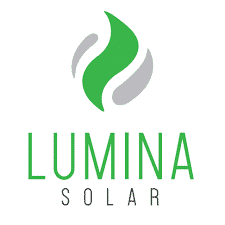
Regional Service
Average cost
Pros
- Comprehensive service offerings
- Offers products from leading manufacturers
- NABCEP-certified technicians
Cons
- Relatively young company
- Slightly limited service area
Lumina Solar is a small regional provider that, in just a few years, has garnered a reputation for unbeatable customer service.
The company doesn’t have much longevity in the industry, but given its operations thus far, we feel it is as trustworthy as those with far more experience.
Why We Chose Lumina Solar as the Best for Customer Service
Lumina Solar has a lot going for it, despite being a younger company. First off, it maintains incredible customer service and overwhelmingly positive customer reviews online. That includes an unprecedented 5-star rating on Google Reviews and the Better Business Bureau (BBB), plus an A+ rating with the BBB. It’s evident in reading these reviews that the company holds customer care in the highest regard.
As a smaller regional provider, Lumina Solar understands the specific needs of Maryland solar customers. Not only are the techs experienced enough to help customers take all of the local solar incentives and solar rebates available, but the company also provides a solar insurance package on top of its warranty coverage. This is ideal for customers in Maryland whose systems are exposed to severe weather and abundant rainfall.
Their local experience could mean a higher chance of being able to help you take advantage of local incentives that larger companies might miss, too. That includes things like the solar tax credits in Anne Arundel County, Baltimore County, Harford County, Prince George’s County, and more.
Finally, Lumina makes charitable donations, so it has a positive overall impact on the state as a whole, which is something that cannot be said for many competitors.
What We Don’t Like
Lumina Solar doesn’t provide a workmanship warranty, specifically. Although the company does couple equipment and production coverage with an insurance package, we’d really love to see a labor warranty for ultimate peace of mind.
Lumina is also quite a young company, having been founded in 2018. We usually look for companies that have at least a decade of experience, as longevity in the industry suggests that a company is unlikely to go out of business and void your warranties in the process. With that being said, we don’t feel that Lumina is a sketchy company, but we did feel compelled to mention its brief stint in the solar space.
Read our full review of Lumina for more information.
Solar Products
Lumina installs panels from a few different tier-one manufacturers, including Silfab, Canadian Solar and REC. All of these are reliable brands that we’d feel comfortable recommending to Maryland solar customers, and the system should be plenty efficient to offset even the above-average electric bills in the area.
We recommend the REC panels, as they top out at 22.3% efficiency. The other two are slightly lower in efficiency, but they come in at the same price point. We feel REC provides the biggest bang for your buck of the options available.
Below is a list of other products and services you can get access to through Lumina Solar:
- Tesla Powerwall
- Solar maintenance
- Roof repair and replacement
- Commercial solar projects
The inclusion of the Powerwall is great to see and should help the company stay relevant even as negative changes to Maryland’s net metering policy — which are expected in the coming years — are made.
Financing Options
Lumina Solar accepts all of the major solar payment options, including cash purchases, loans, leases and PPAs. As is the case with all installers, we recommend a cash purchase, as doing so will yield the highest long-term savings and the lowest all-in system price. A loan is another good option, although savings will be a little lower and your system total a little higher.
Leases and PPAs save the least — around $15,000 less than with cash or a loan — and they don’t let you take the federal credit. However, they don’t have any down payment requirements and have minimal credit requirements, so they’re generally more accessible.
Warranty Information
Lumina Solar includes a 25-year warranty for the panels, which is average, and a 25-year warranty for the panel production, which is about five years longer than what most competitors provide.
While you don’t get a formal workmanship warranty, you do get access to a solar insurance package from SolarInsure. This lasts for 30 years and includes free solar monitoring to help boost solar savings over time.
Facts and Figures: Lumina Solar
| EcoWatch Rating |
|---|
| Better Business Bureau (BBB) Rating |
| Average Cost ($-$$$$$) |
| Solar Services |
| 4.5 |
| A+ |
| $$$ |
| Solar Panels, Solar Batteries, EV Chargers, Energy-Efficiency Audits & Upgrades, Removal & Reinstallation |

Lumina Solar

Regional Service
Average cost
Pros
- Comprehensive service offerings
- Offers products from leading manufacturers
- NABCEP-certified technicians
Cons
- Relatively young company
- Slightly limited service area
Celestial Solar Innovations is a highly reliable local installer that employs techs with local expertise to help you navigate incentives and rebates and maximize savings.
The company has a relatively small service area in Northwest Maryland and doesn’t have a formal workmanship warranty, but it’s still a solid choice.
Why We Chose Celestial Solar Innovations as the Best Local Installer
Marylanders have specific needs that customers in other states don’t, and Celestial Solar Innovations understands those more than most competitors. The company only services Marylanders, so the technicians have years of local experience and can help you take advantage of local incentive programs. Plus, they can help size your system appropriately, which is going to be extra important when you need to maximize savings and keep installation costs to a minimum if NEM gets downgraded and batteries become a necessity.
The company also focuses on customer education and takes a non-aggressive approach to sales. Its representatives are more concerned with educating customers about the benefits of clean energy rather than just making sales, which means you’re likely to get the best system to suit your above-average energy needs.
Celestial Solar provides access to numerous brands of solar equipment, which means you can choose panels that optimize production and maximize solar savings, or you can choose a brand meant more for keeping your installation costs to a minimum. This is especially good news in Maryland, where installation costs are above average.
What We Don’t Like
There are two major downsides to working with this local provider. First, it doesn’t offer a formal workmanship warranty. We feel that the company’s local experience helps ensure you won’t run into weather-related issues or damages with your panels, but we’d still love to see warranty coverage for guaranteed protection.
Additionally, as a small local company, Celestial Solar Innovations only services a small area in Northwest Maryland. As such, many customers throughout the state won’t be able to get service from this provider.
Solar Products
Celestial Solar Innovations installs panels from a few manufacturers, including REC, Panasonic, SolarEdge and Solaria. These are all trustworthy names in the industry and come with robust warranty packages to keep your system safe.
REC and Panasonic have the highest efficiency ratings of the bunch at 22.3% and 22.2%, respectively. If you’re looking to maximize your solar production, we’d recommend REC of these two since they have a slightly lower cost. The other options should help keep installation costs to a minimum.
Below is a list of products and services above and beyond the panels that Celestial provides:
- Solar batteries — the brands are not specified
- Solar monitoring
- Commercial solar projects
Even though it doesn’t specify what batteries are available, the inclusion of solar storage is a good move, in our opinion, and it shows the company’s preparedness for the future changes that are expected to make net metering less valuable and batteries a necessity more than a luxury item.
Financing Options
Celestial Solar Innovations only accepts cash purchases and solar loans. Although the options are limited, these are the only ones we generally recommend. However, leases and PPAs might become more relevant if batteries become the norm and installation costs skyrocket as a result.
Paying with cash is the least accessible option since you’ll be on the hook for an average cost — after the federal credit — of more than $19,000. However, cash purchases yield the greatest energy savings over time and help you avoid interest to keep system costs low.
A solar loan is a better option if you’re looking to keep upfront costs low, although this will lead to fewer savings over time.
Warranty Information
Celestial Solar Innovations includes a 25-year warranty that covers the equipment and the panel efficiency. The equipment coverage is average, and the efficiency warranty is slightly above average.
Unfortunately, the installer doesn’t provide a formal workmanship warranty. We’d really love to see one, especially given the relatively high risk of issues popping up in an area like Maryland.
On average, a system from Celestial Solar Innovations is likely to last for between 20 and 30 years.
Click here for a free quote from Celestial Solar Innovations.
Facts and Figures: Lumina Solar
| EcoWatch Rating |
|---|
| Better Business Bureau (BBB) Rating |
| Average Cost ($-$$$$$) |
| Solar Services |
| 4.5 |
| A+ |
| $$$ |
| Solar Panels, Solar Batteries, EV Chargers, Energy-Efficiency Audits & Upgrades, Removal & Reinstallation |

Edge Energy

Regional Service
Average cost
Pros
- Offers products from SunPower
- Comprehensive service offerings
Cons
- Limited brands of solar equipment available
Edge Energy offers more equipment and services than most companies in Maryland, giving customers access to ultimate system customization.
The company doesn’t have the best customer service, but we still think most customers will be pleased with their overall experience.
Why We Chose Edge Energy as the Best for System Customization
Edge Energy goes above and beyond in its service offerings to make itself a one-stop shop for renewable energy and energy efficiency. In addition to panel and battery installations, it also offers energy audits, air sealing, insulation, roofing services, duct sealing and cleaning, interior renovations, HVAC installation and more. You can get just about any efficiency-boosting work you might want to be done through Edge Energy.
This is going to be an especially big deal if net metering is discontinued or downgraded in Maryland. The lower your electricity, heating and cooling costs are, the more likely you are to be able to get away without needing a battery if the NEM rates drop. If they go away altogether, though, you’ll almost certainly need a battery, in which case a boost to home efficiency can help maximize your savings and minimize the size of the battery you need, along with the cost.
For its solar services, the company includes a 25-year warranty that covers the panels, the efficiency and the workmanship. This is ideal in an area like Maryland, where extreme weather and above-average rainfall can threaten roof penetrations and home solar systems.
Additionally, Edge Energy is a certified SunPower dealer, which means the panels it offers have the highest efficiency ratings in the industry. Since Marylanders have above-average energy demands, these panels are some of the best in the area for maximizing solar savings.
What We Don’t Like
Despite being a small company, Edge Energy sometimes struggles to provide excellent customer service. Generally speaking, the customer reviews are positive, but some have complained about long response times to inquiries and warranty claims, which is definitely a downside.
Additionally, Edge Energy only installs a single brand of panels: Maxeon/SunPower. These panels have the most impressive performance specifications in the industry, but we’d love to see some other options that, for example, help keep installation costs to a minimum rather than maximizing energy generation.
Solar Products
As mentioned above, Edge Energy only installs panels manufactured by Maxeon. These have an industry-leading efficiency of 22.8%, which makes them well-suited to offset the high rates of consumption in Maryland. They also come with outstanding warranty coverage, which is great for MD residents who see a lot of extreme weather and rain each year.
Edge Energy provides access to a huge number of other solar and efficiency services. We’ll list these below:
- Solar batteries — no specific brands are mentioned
- The MySunPower solar monitoring app
- Duct sealing and cleaning
- Energy audits
- Insulation
- Roof repair and replacement
- Drywall and painting
- HVAC installation
- Outdoor lighting
- Solar thermal systems
- Wind energy systems
- Home remodeling
- Commercial solar projects
The wide array of services related to efficiency and solar is great to see, especially since they will become even more beneficial if net metering is downgraded and batteries become necessary. At that point, maximizing home efficiency while converting to solar will provide the highest ROI.
Financing Options
Edge Energy only entertains cash purchases and solar loans, and while these are our only recommended options, they aren’t as accessible as leases and PPAs.
Of the two options available from Edge, we recommend a cash purchase. Over time, not paying interest on a loan will save you around $5,000 more on your energy bills. Loans are also good options, though, and they will save a substantial amount of money, especially given the above-average energy bills in Maryland that will be offset by your photovoltaic (PV) system.
Warranty Information
Edge Energy includes a 25-year warranty for the equipment, the panel efficiency and the workmanship. The equipment warranty is average, but the other two are longer than what most competitors provide.
We’re specifically impressed with the 25-year workmanship warranty, which is 2.5x as long as the industry average. Labor warranties like this provide peace of mind in Maryland, where above-average rainfall and frequent extreme weather can quickly expose problems with solar installations and associated roof penetrations.
Facts and Figures: Edge Energy
| EcoWatch Rating |
|---|
| Better Business Bureau (BBB) Rating |
| Average Cost ($-$$$$$) |
| Solar Services |
| 4 |
| B- |
| $$$ |
| Solar Panels, Solar Batteries, Energy-Efficiency Upgrades, System Monitoring |
Watch Below: Learn Which Solar Incentives to Claim in Maryland To Maximize Savings
How Can You Save Money on Maryland’s Best Solar Companies?
The average solar energy solution in Maryland costs around $23,590 after the federal tax credit — or $33,700 before any rebates or tax credits. This price assumes that you need the standard 10 kilowatt (kW) system to offset your energy bills and that you pay the average of $3.37 per watt for your equipment.
The national average is a bit lower, mostly because the price per watt in Maryland is around $0.04 higher than in the rest of the U.S. Given the high cost of solar conversion in Maryland, most Maryland homeowners understandably look for ways to keep the installation price down. Below, we’ll share some tips for how you can do this when choosing an installer.
- Choose an installer that understands federal, state and local solar perks
- Choose an installer with robust warranty coverage
- Avoid installers that push solar batteries
Choose a Provider That Can Help You Take Advantage of Solar Incentives
Solar benefit programs provide the best ways to save money on your solar conversion no matter where you live. With the right perks, you can take thousands of dollars off of your effective system costs.
We strongly recommend choosing an experienced solar installer and specifically one that has local experience in Maryland and its SREC market. This gives you a better chance of getting a company that can help you take advantage of incentives to save money.
The table below provides a quick breakdown of the available solar incentives in Maryland.
| Incentive | Description |
| Federal Solar Investment Tax Credit (ITC) | This federal solar credit is for 30% of your entire system price, including panels, inverters and batteries. It gets applied to your tax liability, which effectively saves you money on your installation costs. The average credit amount in MD is $10,110, making this one of the best benefit programs available. |
| Sales Tax Exemption | MD waives all sales tax on PV equipment. This helps keep the cost of converting to solar as low as possible. |
| Property Tax Exemption | This policy prevents your property taxes from increasing after going solar. Normally, any home improvement that raises your home value — like solar conversion — would bump up your taxes. |
| Net Metering | Solar net metering is a billing policy offered by utility companies. It lets you overproduce energy and bank the excess with your electric company for later use. Those credits can pay down future bills to help increase long-term solar savings. Net metering is mandated in MD, and credits are offered at the full retail rate, which is outstanding. |
| MD Energy Storage Tax Credit | This is a statewide tax credit for solar batteries. In addition to the ITC, you can take this credit for battery installation only. It’s for 30% of your total battery costs. For reference, the credit for a single Tesla Powerwall would be around $3,000. |
| SRECs | Although Maryland’s SREC market is oversaturated, homeowners can still secure decent value through the SREC market. The bid price at the time of writing was $55. This means that solar customers in MD can effectively make an additional $55 per each MW of electricity their system generates. |
There are also local incentives, including the following:
- Anne Arundel County Solar Tax Credits: Valued at up to $2,500 for home solar arrays.
- Baltimore County Solar Tax Credits: Valued at up to $5,000 for home solar arrays.
- Harford County Solar Tax Credits: Valued at up to $2,500 for home solar arrays.
- Prince George’s County Solar Tax Credits: Valued at up to $5,000 for home solar arrays.
Avoid Installers That Push Solar Batteries
Solar battery systems seem like a great investment in MD because power outages are more common than in many other states.6 While batteries will allow you to maintain electricity through outages, they really only pay for themselves in areas where net metering isn’t available.
Net metering is currently mandated for all utility companies in Maryland, and customers get credited at the full retail rate for excess energy, which is the best-case scenario. This policy helps reduce your panel payback period and maximize long-term savings. Batteries can do the same in states where this policy isn’t available.
If you’re dead set on installing batteries, by all means, choose an installer who offers them. You can even take advantage of the energy storage credit offered in Maryland to save money. However, if you run into a company that pushes solar batteries, we recommend opting for a different, more reliable one.
Keep in mind that the net metering policies in other states have been changing over the years, and while Maryland still has a great program, it could see a credit rate reduction or even be discontinued altogether. If that happens, batteries are likely going to become a necessity, even though they currently aren’t. We suggest speaking with a reputable solar installer — one from the list above would be a good idea — about the current NEM policy and whether or not a battery would save you money or just be a nice thing to have to combat power outages.
Choose a Solar Installer With a Good Warranty
MD residents experience their fair share of extreme weather, including hurricanes, tropical storms, tropical cyclones and severe thunderstorms. All of these weather events can put your solar panels at risk of damage from fallen trees and blown debris.
Choosing a company that offers a solid physical protection warranty will provide peace of mind that your solar investment is protected even in the most extreme conditions.
It’s also great to have a workmanship warranty, as this helps ensure that the installation process is done well. Maryland solar solutions are at high risk of roof leaks because of the above-average amount of rainfall — nearly double the national average.5 A company that offers a workmanship warranty is less likely to leave you with these costly problems.
Read Also: Calculate How Much You Can Save By Going Solar
Will Solar Increase Your Home Value In Maryland?
Yes! Installing solar equipment on your Maryland home is expected to bump up your property value by around 4.1%, according to research from Zillow.7 In MD, where home values average around $402,625, that’s an average increase of around $16,507.8 This is well above the national average for value increase, making MD a great place to convert to solar energy.
Since solar provides value benefits based on home value, cities in MD that have above-average property values will naturally see more value increase. Below is a list of some of the cities in the Free State that should see more value from panel installation:
- Baltimore
- Gaithersburg
- Rockville
- Takoma Park
- Cooksville
- Garrett Park
- Brookeville
- Boyds
- Annapolis
Additionally, home prices have risen by over 8% in the last year or so, so the return on investment on your Maryland solar conversion is just getting higher and higher.
DIY vs Professional Solar Installation in Maryland
DIY solar installation often seems like a great option in Maryland because the cost is significantly lower than hiring a professional. Unfortunately, there are some significant downsides to installing your own photovoltaic equipment. Below, we’ll provide some reasons why DIY installation can often end up costing you more and why we recommend against it for most residents.
- DIY installations lead to a higher risk of roof leaks
- DIY solar warranties are much less impressive
- DIY solar panels usually have a lower efficiency and poorer performance
DIY Panel Installations Are More Likely to Leak
Roof leaks are one of the most common issues solar customers experience. Thankfully, professional installers use high-quality materials and specific techniques to reduce the risk of roof leaks. The same cannot be said about DIY installations.
Roof leaks are always a concern, but they’re more likely to occur if an inexperienced DIYer completes the installation. While you’ll save money on labor, you could end up paying those savings or more repairing water damage or replacing your roof.
Roof leaks are especially prevalent in MD, where the average annual rainfall is nearly double the U.S. average. As such, we always recommend a professional installation in MD.
DIY Panel Warranties Are Less Than Ideal
As we mentioned above, solar warranties in Maryland are crucial. Physical warranties help protect your investment from damage from MD’s extreme weather, efficiency warranties help ensure your system will continue to offset the above-average energy bills in MD and workmanship warranties help prevent damage from the excessive rain in the area.9
Unfortunately, the warranties that come with DIY panel kits are far less robust and last for much less time than the ones you get with most professional installations. DIY kits usually come with a warranty for manufacturer defects only for around five years. Professional systems can have total coverage for up to around 25 years.
DIY Panels Aren’t As Efficient
Finally, since energy bills in Maryland are above the national average, most residents find it important to install efficient panels that can help offset the high energy costs in the area. DIY panels usually have lower efficiency ratings than most professional systems, which means your kit will generate less energy and offset less of your bill if you install it yourself.
Most solar companies also use advanced software to design systems to maximize sunlight exposure based on the pitch and azimuth of your roof. DIY installations will not be as effective in generating energy long-term.
While professionally-installed solar arrays almost always cost more, the average system in Maryland will pay for itself and save an additional $34,212, on average. This is typically above what a DIY panel kit will save due in part to the difference in efficiency rating.
What Should Marylanders Look For in a Solar Installer?
There are a few things we recommend you look for in a solar installation company if you live in MD. We’ll list the factors that we believe are most important below, and we’ll explain why each is crucial in the sections that follow.
- Good product warranties to protect against local extreme weather
- Good pricing and financing options
- Good customer service and fast response times
Product Warranties
We often advise prospective solar customers in MD to prioritize warranty coverage when choosing an installer.
The Free State sees frequent extreme weather that can put panels at risk of damage from fallen trees and other issues. A warranty that protects your solar panels from damage can provide peace of mind through hurricanes, tropical cyclones and other major weather events.
It’s also not a bad idea to look for lengthy labor warranties. Solar panel companies that guarantee their workmanship are more likely to carry out a successful installation that won’t be prone to water intrusion. This is especially important in MD, where the annual rainfall is significant.
Price and Financing Options
The average cost per watt for solar equipment in MD is around $0.04 higher than the national average. For the typical 10 kW system, that comes out to a total of $400 more that you’ll be paying than what other U.S. residents would pay for the same system.
Since local prices are relatively high, it’s wise to look for companies that keep costs low by discounting equipment or offering deals for installation. It might also behoove you to choose an installer that accepts power purchase agreements (PPAs), financing, leases, as these payment options are more accessible than cash payments.
Customer Service
Finally, in an area like MD, where there are so many solar installers available, many companies fight for new customers and fall short on service for existing customers.
We recommend choosing an installer that provides good customer service through the installation process and beyond. This helps ensure you have a positive experience and get a fast response to any warranty claims you may need to make. You can gauge a company’s service by reading through some positive and negative customer reviews.
Methodology: How We Reviewed the Best Solar Companies in Maryland
When we review solar installers in Maryland, we look at six major factors that we believe are the most crucial when choosing a provider in the Free State. We weight these factors and use them to rank providers based on their likelihood to provide you with quality service and equipment that can keep up with demand in MD. We’ll explain these criteria below.
- Local reputation and reviews (20%): With over 100 installers operating in Maryland, we feel it’s crucial to look at each provider’s reputation and customer reviews first. We read through reviews to see where companies excel and fall short of the competition, and we assess how important those areas are to your overall experience as a solar customer. Especially given the high demand in the area, we use this factor to find companies that are likely to provide reliable service and aren’t just in the industry to turn a profit.
- Pricing and financing (20%): Maryland solar systems are more expensive than those in most states. That’s why we look for companies that maintain average or below-average pricing for the area to keep renewable energy systems as affordable as possible. Additionally, we prioritize installers that accept a multitude of financing options. With high installation costs, systems are naturally less accessible, but having a few different payment options helps boost accessibility even in the face of high prices.
- Services offered (20%): We also choose companies that provide access to multiple services and not just panels and batteries. Batteries, in particular, aren’t as beneficial in MD as they are in many other states since Maryland residents have access to outstanding net metering programs. However, with above-average energy demands, companies that offer energy efficiency upgrades and home improvements in addition to solar are more appealing and can help maximize your energy savings.
- Warranty coverage (20%): Marylanders see hurricanes and tropical storms that put rooftop panels at an increased risk of damage. Additionally, the state gets nearly twice the national average amount of rainfall per year, which can lead to roof leaks where solar mounting equipment penetrates the roofing material. We do our best to promote companies that offer robust equipment, efficiency and labor warranty coverage to help protect systems from the relatively high risk of damage.
- Company experience (10%): With such a high demand for solar equipment, a lot of companies in Maryland are just popping up to take advantage and turn a profit. We are far more comfortable recommending companies that have some experience behind them and have demonstrated that they’re here to stay. We try not to promote young companies that don’t have longevity in the industry, as they are usually more likely to go out of business and void your warranties in the process.
- Brand quality (10%): Finally, we consider the brands of solar panels offered by each installer. Companies that have a few options that range from affordable to expensive and moderate to very high efficiency ratings are likely to appeal to more customers, even if they’re working on prioritizing different things.
Read More About Going Solar in Maryland
- Is Solar Worth It in Maryland?
- Maryland Solar Incentives Guide
- Find Cost Savings on Solar Panels in Maryland
- What to Know Before Buying Solar Panels in Maryland
The cost information presented in this article is derived from a comprehensive analysis, incorporating data from multiple industry sources. The average cost per watt per state was calculated based on figures from Consumer Affairs, Energy Sage, and Berkeley Lab’s Electricity Markets & Policy Department. Additionally, monthly energy consumption and the average monthly cost of electricity were sourced from the U.S. Energy Information Administration, ensuring a well-rounded and accurate representation of the information presented.
FAQs: Best Solar Companies in Maryland
Below, we’ll answer some of the most common questions we see about the prospect of going solar in MD.
The most reputable solar provider in MD may be SunPower, due to its size and national acclaim. However, there are plenty of reputable local companies as well, including Lumina and Solar Energy World.
Though there is no statewide tax credit, MD offers direct payments of $1,000 to property owners that install solar via its residential clean energy grant program. The federal solar tax credit is also available to residents of MD, along with SRECs, net metering, and sales and property tax exemptions.
Yes, MD is an outstanding state to go solar. While the cost of PV equipment is a bit higher than it is in the rest of the country, MD has great incentives to help reduce the upfront cost of your system and maximize long-term savings.
Plus, MD receives around the average number of sunny days per year, and solar customers in the area experience a panel payback period that’s in line with the U.S. average. The typical solar customer in MD also saves an average of over $34,212 converting solar, and that’s after the panels pay for themselves in energy savings.
Most MD residents pay around $23,590 for their panels after the federal solar tax credit, or $33,700 before the credit. This assumes you need the average system size of 10 kW and pay the typical local cost of $3.37 per watt for your equipment.
Top Solar Installers in Maryland Cities
Comparing authorized solar partners
-
- Most efficient panels on the market
- National coverage
- Cradle to Cradle sustainability certification
- Great warranty coverage
- Expensive
- Customer service varies by local dealer
A+Best National Provider1985SunPower Panels25-year all-inclusive warranty
Having trouble deciding? Click below and use our process to receive multiple quotes instead:

 233k
233k  41k
41k  Subscribe
Subscribe 
